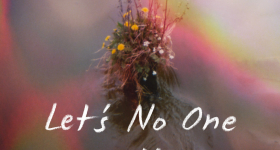Writer Jason Coe
Illustrator Nathan Huang
1938 Charlie Low opens Forbidden City—the first nightclub to showcase Chinese American performers—in San Francisco, a favorite haunt of locals and visiting celebrities such as Duke Ellington and Bing Crosby.
1955 Indian sarode player Ali Akbar Khan becomes the first Indian musician on American television when he appeared on Alistair Cooke’s Omnibus.
1957 Pat Suzuki becomes the first Japanese American signed to a major label when she is referred to RCA by Bing Crosby.
1964 Eight-year-old child-prodigy Yo-Yo Ma appears on television performing with composer Leonard Bernstein. Ma goes on to study at the Julliard School, eventually becoming the most acclaimed cellist in the world.
1968 Ben Fong-Torres begins writing for Rolling Stone Magazine and is promoted to news editor in 1969. He continues to be a major journalist in the American music scene.
1968 Asian Music, a magazine dedicated to scholarly research on Asian musical art forms, publishes its first issue.
1973 Charlie Chin, Chris Iijima and Nobuko Miyamoto create the folk trio Yellow Pearl. Their first album, A Grain of Sand, spreads a political message championing minority rights, immigrant rights and an anti-Vietnam War message.
1975 Latin soul pioneer Joe Bataan releases Afrofilipino, one of his best-selling albums and a tribute to his bi-racial heritage.
1978 Sound Explosion, the first of hundreds of Filipino-led mobile DJ crews in the San Francisco Bay Area, forms at Balboa High School in San Francisco. These crews will eventually produce Filipino American scratch legends like DJs Q-Bert, Mixmaster Mike and Apollo.
1979 Hiroshima, a fusion jazz band comprising Japanese Americans, releases its self-titled debut album on Arista records. From the album, the R&B hit “Roomful of Mirrors” becomes a hit.
1986 Filipino American heavy metal band Death Angel releases its first album, The Ultra-Violence, hailed as one of the greatest thrash albums of all time.
1987 Jan Jang and Francis Wong found the nonprofit Asian Improv Records, the main recording label of the Asian improv jazz movement, which began in the ’80s and still flourishes today.
1992 Half-Chinese/half-Trinidadian rapper Fresh Kid Ice, from 2 Live Crew, releases a solo album, The Chinaman.
1995 Ear of the Dragon, a compilation album of Asian American indie rock bands including Seam, Versus, Aminiature, Skankin’ Pickle and J Church, is released.
1997 Coinciding with the release of UK-based Talvin Singh’s Anokha, the album rumored to have started the Asian Massive movement, DJ and filmmaker Vivek Bald begins the groundbreaking Mutiny club night in New York City, creating a critical mass for the rise of South Asian American DJs and musicians working on the cutting edge of electronic music. Mutiny continues until 2003.
1998 The soundtrack of the film Yellow, directed by Chris Chan Lee, is the first to feature only Asian American musicians.
1999 Handsome Boy Modeling School, a rap collaboration comprising Dan “the Automator”
Nakamura and Prince Paul, releases its first album So …How’s Your Girl? to critical acclaim. Nakamura, of Japanese descent, is at the forefront of trip-hop and is featured on the first
Gorillaz album.
2000 Linkin Park releases Hybrid Theory, which goes diamond (ten times platinum)
and is currently the best-selling debut album of the 21st century. Founding members include Joseph Hahn, who is of Korean descent, and Mike Shinoda, who is half-Japanese.
2001 First Asian America Hip Hop summit held in Los Angeles.
2002 A revival of Flower Drum Song is done on Broadway, rewritten by David Henry Hwang, writer of M. Butterfly and starring Lea Salonga from Miss Saigon. Hwang rewrites the musical as he assumes Rodgers and Hammerstein would have written it if they were Asian American.
2002 Chinese American rapper Jin wins BET’s 106 and Park Freestyle Fridays competition for the seventh week in a row. He later signs to Ruff Ryders and releases The Rest Is History, the first rap album by an Asian American on a major label, in 2004.
2004 Professor Deborah Anne Wong publishes Speak it Louder: Asian Americans Making Music, one of the only books published on Asian American music and a significant contributor to this time line.
2005 Chinese American music journalist Jeff Chang publishes Can’t Stop, Won’t Stop, widely considered one of the definitive books on hip-hop history.
2006 MTV launches various Asian American channels, including one catering to South Asian Americans, Chinese Americans and Korean Americans.
Jason Coe was Hyphen’s intern. He spent part of his summer researching a more comprehensive version of this timeline with 63 entries. To see the full timeline, in all its awesomeness, visit hyphenmagazine.com









Comments